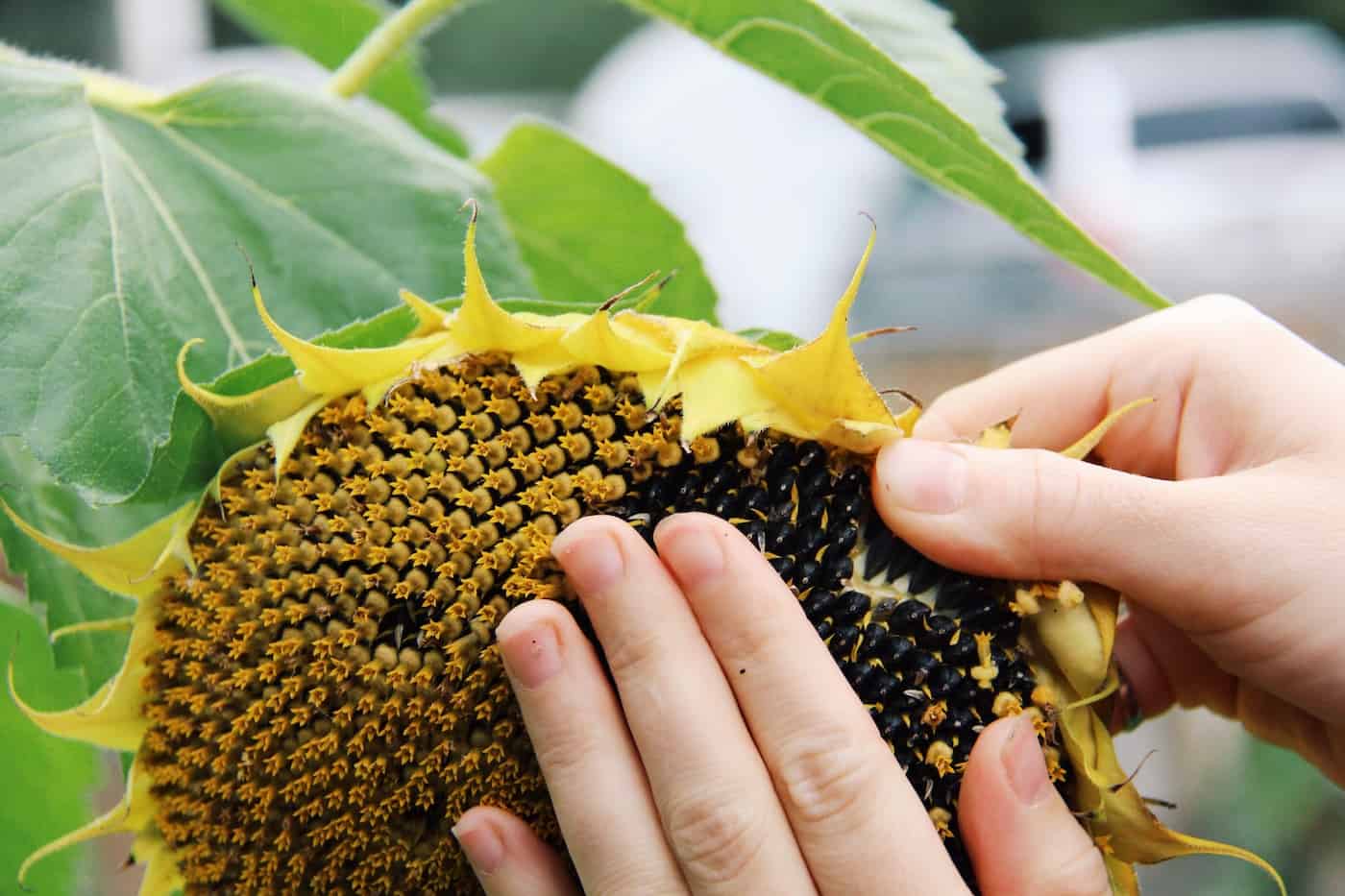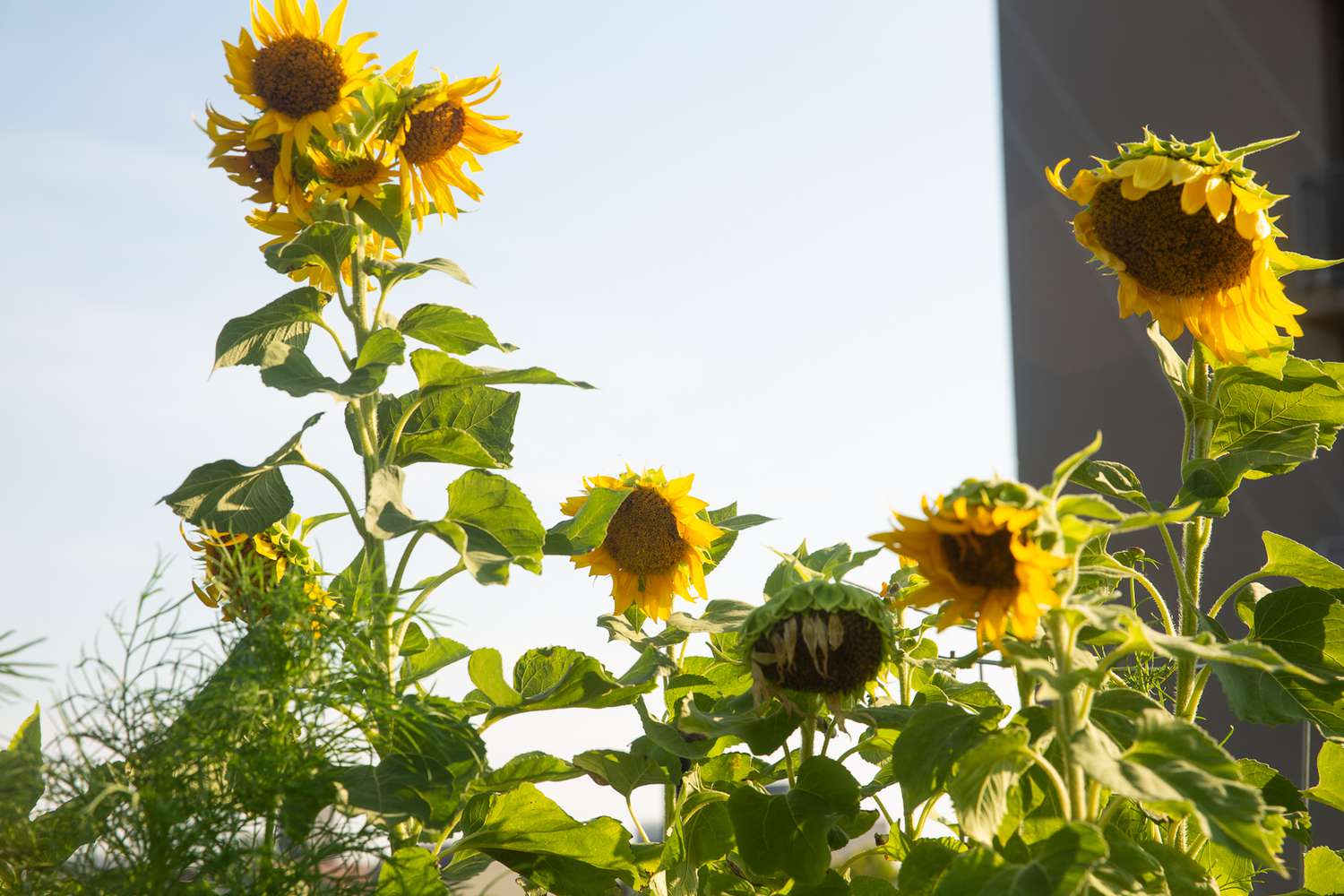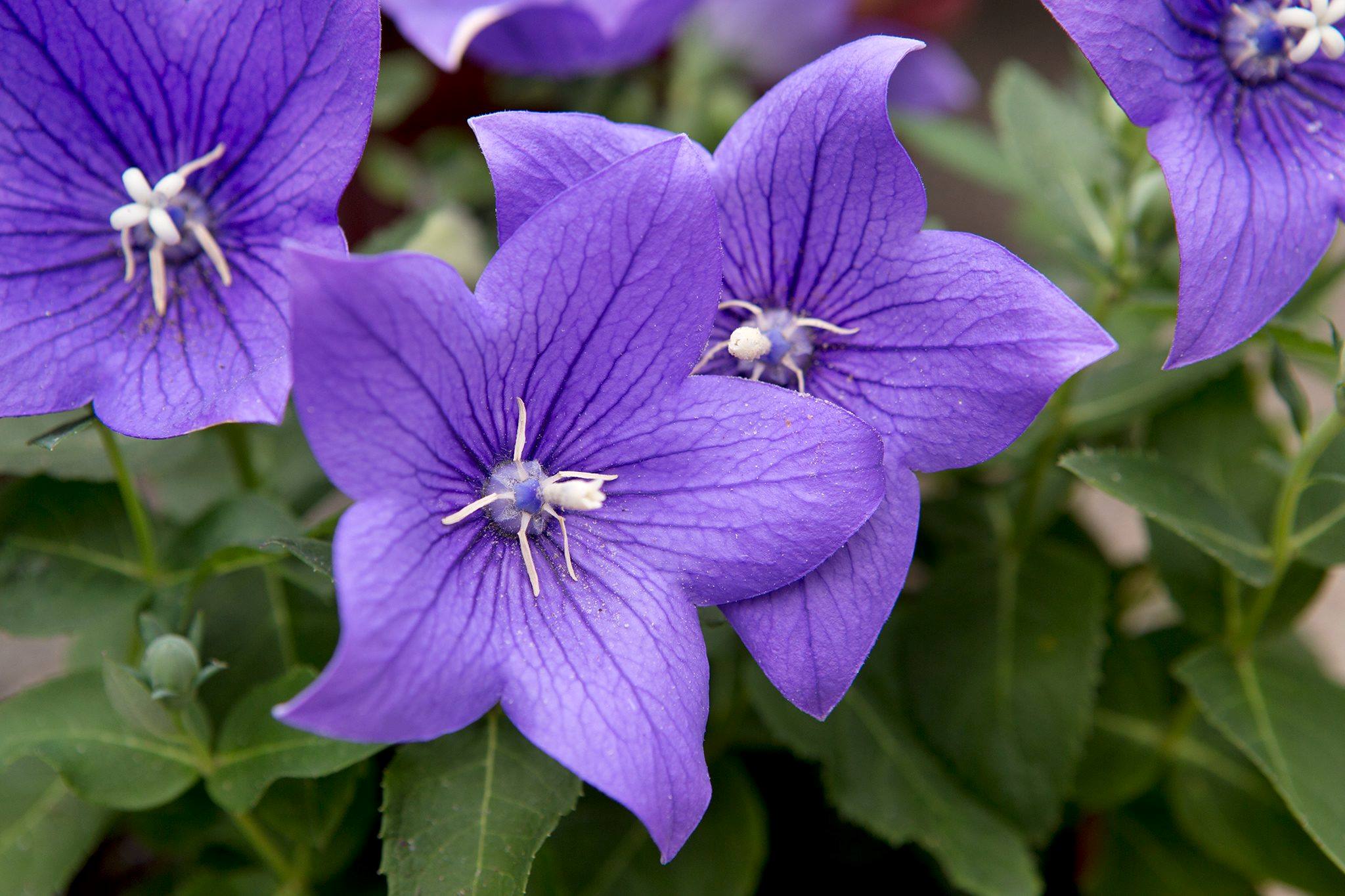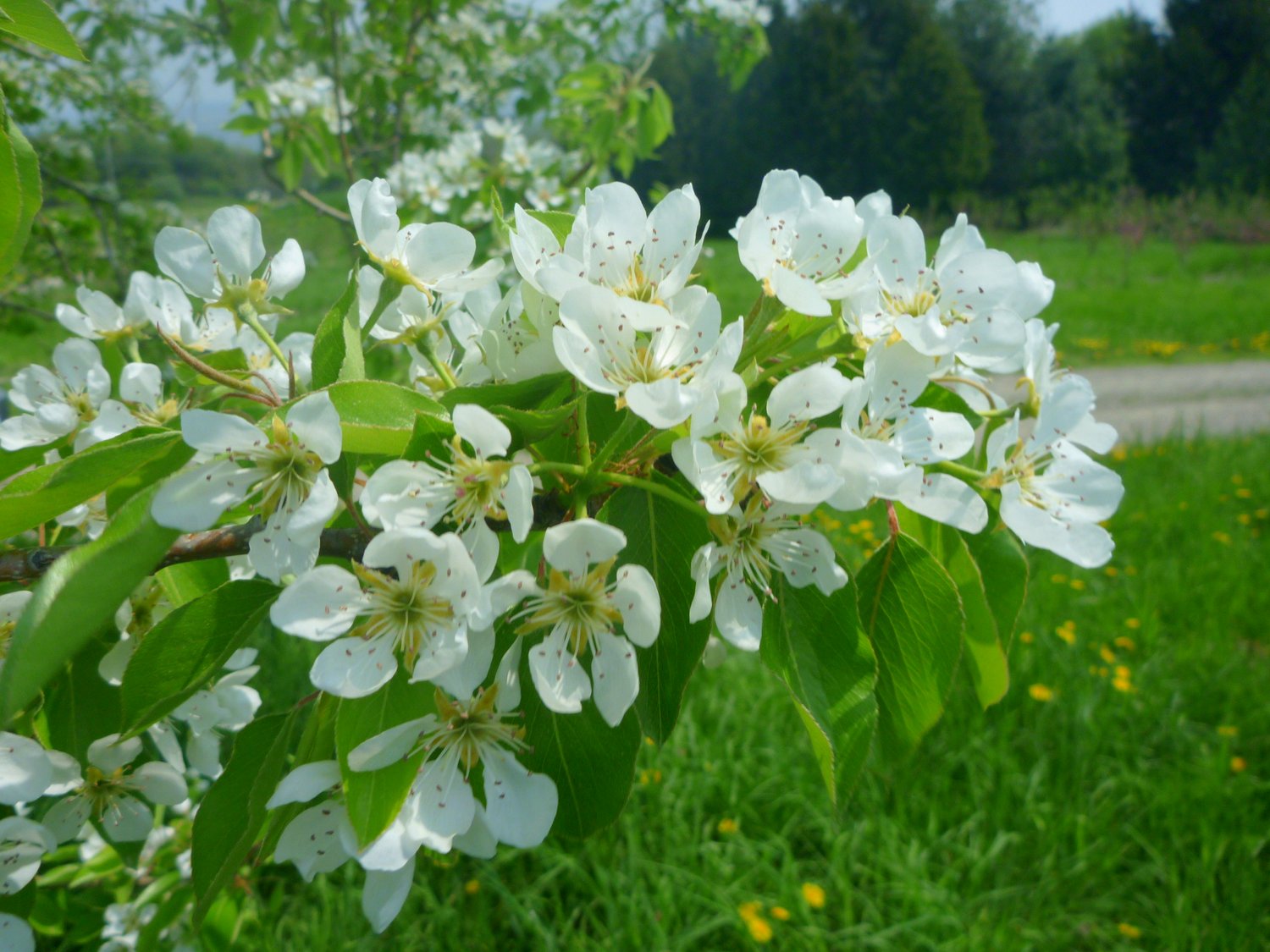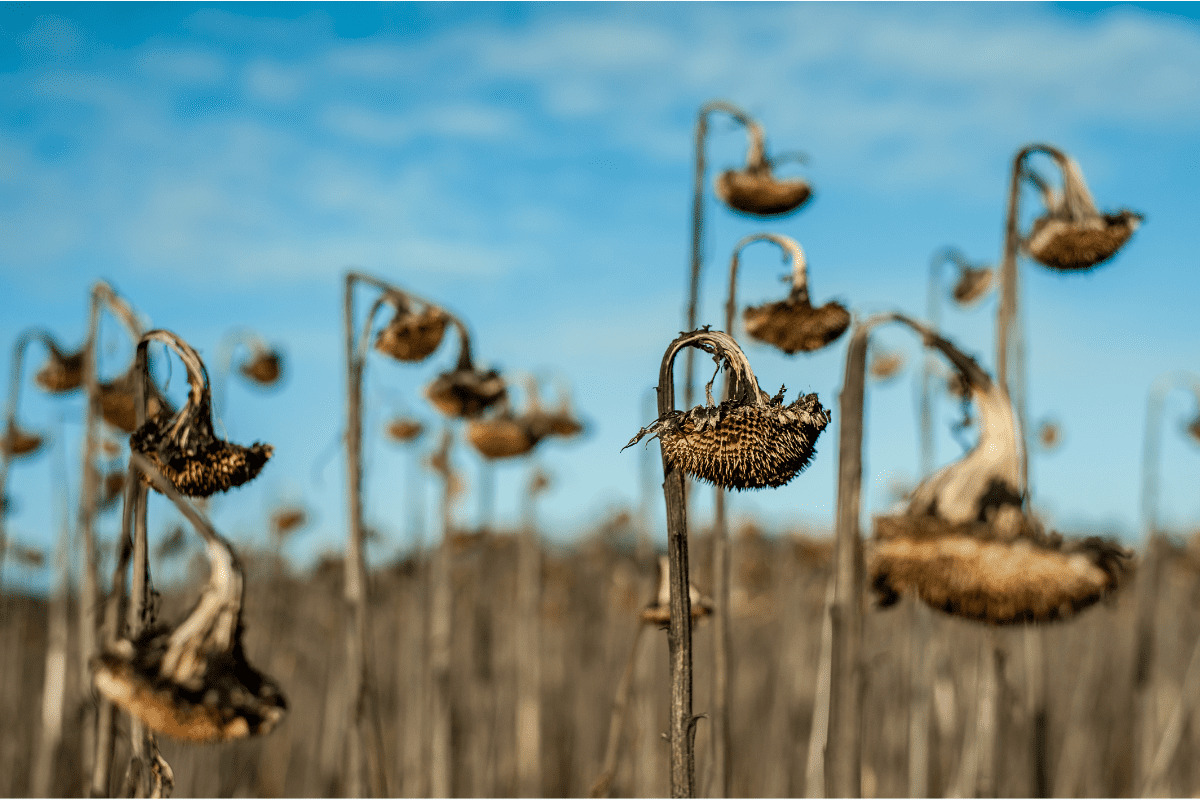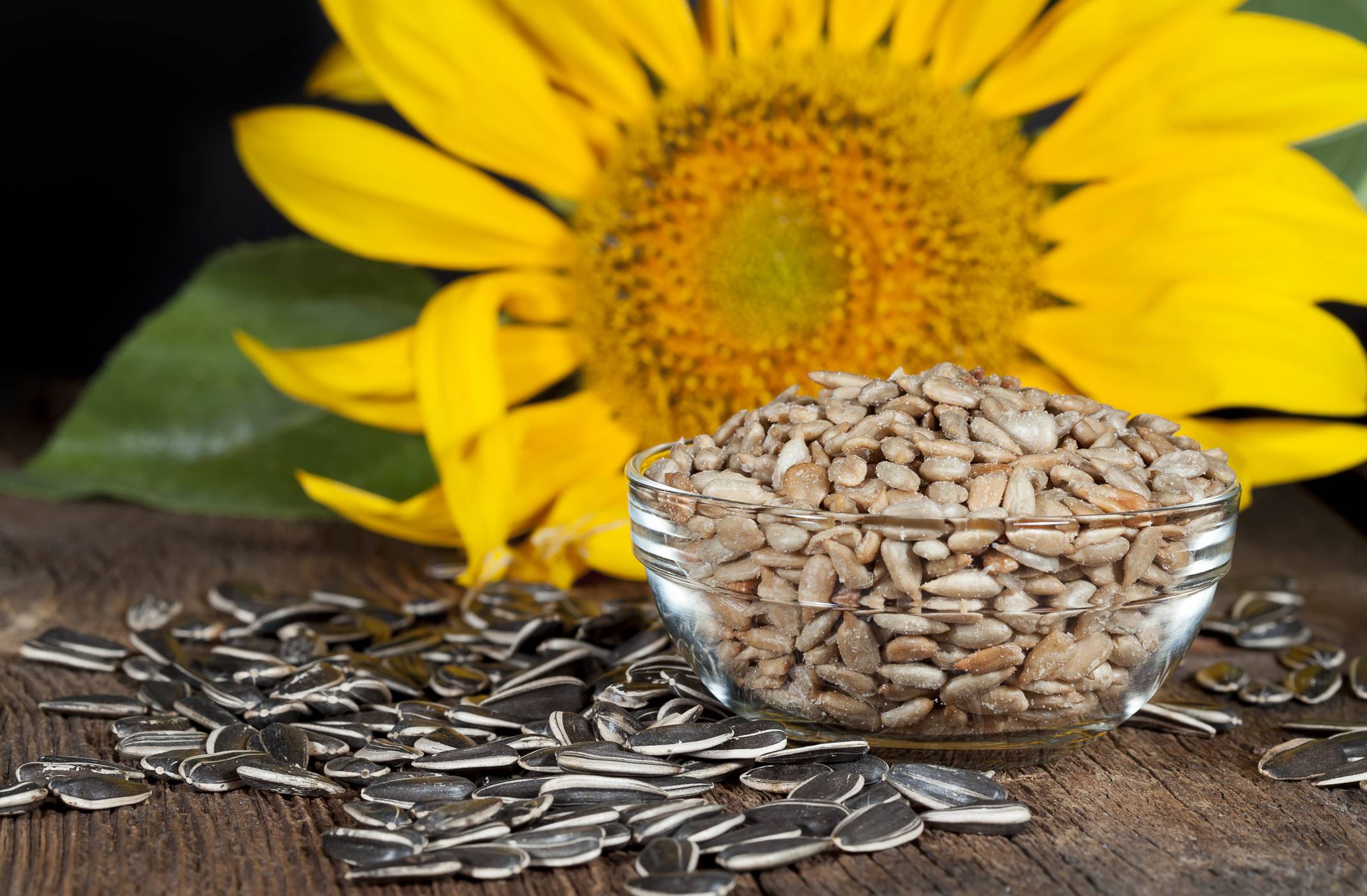Home>Types of Gardening>Ornamental Gardening>When Do Sunflowers Bloom In Kansas
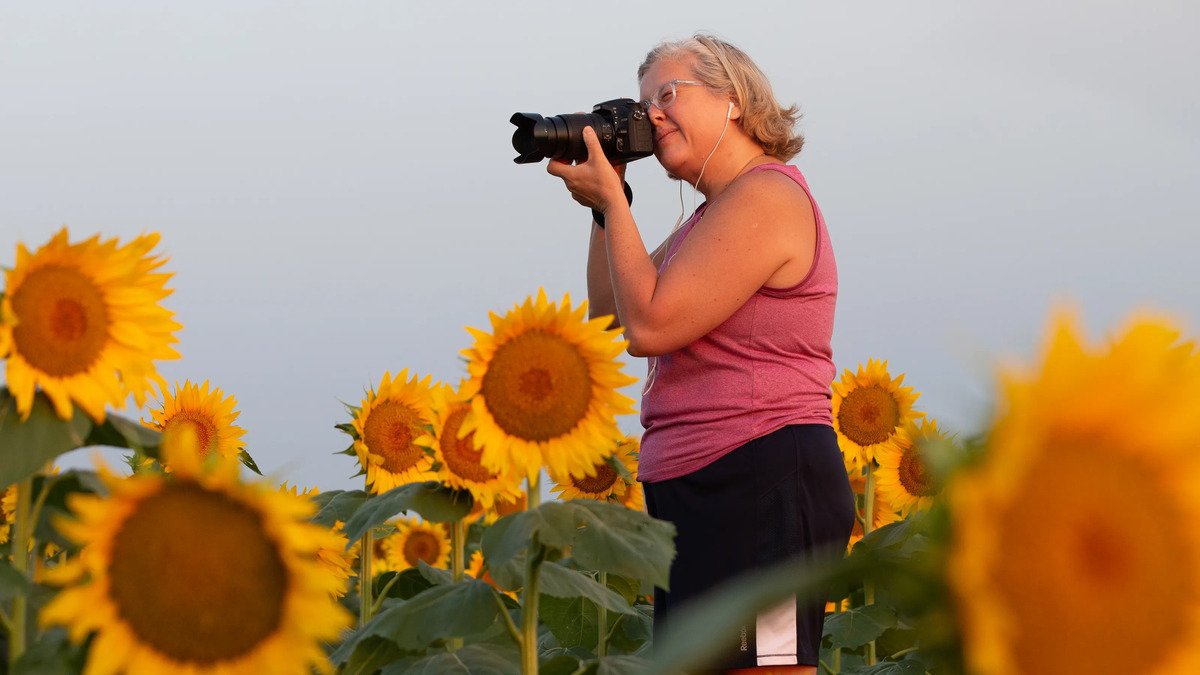

Ornamental Gardening
When Do Sunflowers Bloom In Kansas
Modified: January 22, 2024
Discover when sunflowers bloom in Kansas and how to incorporate them into your ornamental gardening. Expert tips and advice for a vibrant and colorful garden.
(Many of the links in this article redirect to a specific reviewed product. Your purchase of these products through affiliate links helps to generate commission for Chicagolandgardening.com, at no extra cost. Learn more)
Table of Contents
Introduction
Welcome to the world of ornamental gardening, where beauty flourishes and nature comes alive in vibrant displays of color. If you have a passion for creating stunning landscapes adorned with beautiful and captivating plants, then you’ve come to the right place.
Ornamental gardening is a practice that involves using plants, flowers, and other natural elements to enhance the aesthetic appeal of outdoor spaces. It allows individuals to express their creativity and showcase their unique sense of style. Among the many stunning flowers that grace our gardens, sunflowers stand out as one of the most iconic and recognizable blooms.
Sunflowers, with their large, radiant yellow petals and tall, sturdy stems, have captured the hearts of garden enthusiasts around the world. They are not only visually stunning but also hold symbolic and cultural significance in many societies. Whether you want to grow sunflowers for their beauty or explore their deeper meanings, understanding their blooming time is crucial.
In this article, we will delve into the fascinating world of sunflower blooming, specifically focusing on the Kansas region. Known as the “Sunflower State,” Kansas boasts a rich agricultural heritage and is renowned for its vast fields of golden sunflowers. We will explore the factors that influence sunflower bloom time, the different varieties of sunflowers found in Kansas, and the importance of observing their blooms.
So, whether you are a seasoned gardener or someone starting their ornamental gardening journey, join us as we uncover the secrets behind the bloom of sunflowers in Kansas.
Understanding Sunflowers
Sunflowers, scientifically known as Helianthus annuus, are native to North America and have been cultivated for centuries for their beauty, edible seeds, and oil. They belong to the Asteraceae family, which includes daisies and asters. Sunflowers are known for their large, daisy-like flower heads that can reach sizes ranging from a few inches to over a foot in diameter.
These impressive flowers get their name from their behavior of following the sun throughout the day, a phenomenon known as heliotropism. Sunflowers exhibit positive heliotropism, with their flower heads facing east in the morning and slowly tracking the sun as it moves across the sky, facing west by the afternoon.
One of the standout features of sunflowers is their tall and sturdy stems, which can reach heights of 5 to 12 feet or more, depending on the variety. These sturdy stems allow sunflowers to withstand gusty winds and support the weight of their large blossoms. Additionally, sunflowers have coarse, toothed leaves that are arranged alternately along the stem.
The vibrant petals of sunflowers come in a variety of colors, ranging from bright and sunny yellow to rich shades of orange, red, and even purple. The center of the flower, known as the disk, is composed of numerous tiny flowers called florets. These florets mature into seeds, making sunflowers a valuable crop for their edible seeds and oil.
Another fascinating characteristic of sunflowers is their ability to attract pollinators, especially bees and butterflies, with their nectar and bright-colored petals. This makes sunflowers not only a visually appealing addition to any garden but also an essential habitat for pollinators, contributing to the overall health and biodiversity of the ecosystem.
Understanding the anatomy and unique features of sunflowers is crucial for successfully cultivating and appreciating these magnificent flowers. Now that we have a basic understanding of sunflowers, let’s explore how climate affects their bloom time in Kansas.
Climate and Sunflower Bloom
The climate plays a significant role in determining the bloom time of sunflowers in Kansas. Sunflowers are known for their adaptability, but they thrive in areas with specific temperature and daylight conditions. Understanding the climate of Kansas can give us insights into when sunflowers are likely to bloom.
Kansas has a continental climate, characterized by hot summers and cold winters. The state experiences a wide range of temperatures, with average highs reaching the 90s°F (32-37°C) during the summer and dropping to the 30s°F (-1 to 4°C) during the winter months. These temperature fluctuations influence the growth and development of sunflowers.
When it comes to sunflower blooming, two main factors come into play: temperature and daylight hours. Sunflowers are warm-season plants and require temperatures between 70-78°F (21-26°C) for optimal growth. Temperatures below 50°F (10°C) can stunt their growth, delay flowering, or even cause damage to the developing buds and petals.
Additionally, sunflowers are photoperiodic plants, meaning their flowering is regulated by the length of daylight hours. In Kansas, the longest day of the year falls around June 21st during the summer solstice. As days get shorter from late June, it triggers the process of sunflower blooming. The specific blooming time can vary depending on the sunflower variety and environmental conditions.
It’s important to note that while temperature and daylight hours are crucial, other factors such as soil moisture, nutrients, and overall plant health also impact sunflower blooming. Adequate soil moisture and the appropriate balance of nutrients are essential for healthy plant growth and robust flower development.
By understanding the climate patterns in Kansas and the specific requirements of sunflowers, we can gain insights into when to expect these magnificent blooms to grace the landscapes of the Sunflower State. However, it’s worth noting that weather variations and individual plant characteristics can lead to some variation in bloom time.
Factors Affecting Sunflower Bloom Time
While climate plays a significant role in determining the bloom time of sunflowers, several other factors can influence when these majestic flowers will grace our gardens. Understanding these factors can help gardeners and enthusiasts anticipate and plan for the arrival of sunflower blooms.
1. Variety: Different sunflower varieties have varying bloom times. Some varieties are early bloomers, producing flowers in a shorter period, while others are late bloomers, taking longer to reach their full flowering stage. It’s essential to select sunflower varieties that align with your desired bloom time and growing season length.
2. Planting Date: The timing of planting can also impact sunflower bloom time. Planting sunflower seeds too early in the season, when temperatures are still cool, can delay blooming. Conversely, planting too late can result in a shorter bloom period. It’s crucial to consider the recommended planting dates for your chosen sunflower variety and the prevailing weather conditions.
3. Soil Conditions: Soil health and nutrient availability can affect sunflower bloom time. Sunflowers thrive in well-draining soil with a pH range of 6.0-7.5. Adequate soil moisture, proper fertility levels, and balanced nutrient ratios contribute to healthy plant growth and timely blooming. Conducting a soil test and amending the soil accordingly can optimize the conditions for sunflower growth and bloom.
4. Watering and Irrigation: Proper watering and irrigation practices are key to sunflower blooming. Sunflowers require regular watering, especially during hot and dry periods. Consistent moisture helps promote healthy growth and abundant blooms. However, excessive watering or waterlogged soil can lead to root rot and hinder blooming. Striking a balance in watering practices is crucial.
5. Pest and Disease Management: Pests and diseases can impact the health and blooming of sunflowers. It’s important to monitor for common pests like aphids, caterpillars, and grasshoppers, and take appropriate measures for their control. Additionally, keeping an eye out for diseases such as powdery mildew or downy mildew and addressing them promptly can prevent damage to the flowers and overall plant health.
By considering these factors and implementing appropriate gardening practices, you can optimize the bloom time of your sunflowers. Patience, observation, and proper care are key to enjoying the stunning display of sunflower blooms in your garden.
Sunflower Varieties in Kansas
Kansas is renowned for its vast fields of sunflowers, and the state offers a diverse range of sunflower varieties that enthusiasts and growers can explore. Each variety has its unique characteristics, including differences in size, color, and bloom time, allowing for a stunning array of sunflowers to grace gardens and landscapes across the state.
1. “Autumn Beauty”: This variety is known for its multi-colored petals, ranging from shades of yellow and orange to deep burgundy and red. “Autumn Beauty” sunflowers bloom from mid to late summer, adding a vibrant and diverse palette to gardens.
2. “Lemon Queen”: As the name suggests, this variety features beautiful lemon-yellow petals. “Lemon Queen” sunflowers are renowned for their branching habit, producing multiple blooms per stem. They have a long blooming period, starting in mid-summer and extending into early fall.
3. “Mammoth”: As the name implies, “Mammoth” sunflowers are known for their impressive size. These giants can reach heights of 10-12 feet or more, with massive flower heads that can measure up to 2 feet in diameter. “Mammoth” sunflowers bloom in late summer, creating a commanding presence in any garden.
4. “Teddy Bear”: This popular variety stands out with its unique appearance, featuring fully double, fluffy yellow flowers. “Teddy Bear” sunflowers are relatively compact, growing to about 2-3 feet tall. They bloom from mid to late summer, adding charm and texture to gardens.
5. “Sunforest Mix”: This mix is a delightful combination of various sunflower varieties, including different colors, sizes, and petal forms. “Sunforest Mix” sunflowers provide a stunning display of diversity, offering a range of bloom times from mid-summer to early fall.
In addition to these varieties, there are countless other sunflower cultivars and hybrids available, each with its unique attributes. When selecting sunflower varieties for your Kansas garden, consider factors such as bloom time, size, color, and growth habit to create a visually appealing and diverse display.
By incorporating a mix of early, mid, and late-blooming varieties, you can prolong the glorious flowering period and enjoy the beauty of sunflowers throughout the summer and into the fall. Let your creativity and personal preferences guide you in selecting the perfect sunflower varieties for your Kansas garden.
Bloom Timeline of Sunflowers in Kansas
The bloom timeline of sunflowers in Kansas can vary depending on various factors, including the specific variety, climate conditions, and planting dates. However, a general timeline can help gardeners anticipate and plan for the arrival of these radiant beauties.
The blooming of sunflowers typically begins in Kansas around mid to late summer, usually in July. However, it’s important to note that this timeline can vary slightly from year to year due to variations in weather patterns and other environmental factors.
Early blooming sunflower varieties, such as “Autumn Beauty” and “Teddy Bear,” are often the first to showcase their vibrant colors, starting their blooming period in mid-summer, around July. These varieties add a splash of beauty and excitement to the Kansas landscape, signaling the beginning of sunflower season.
In late July to early August, sunflower fields in Kansas transform into a breathtaking sea of yellow and golden hues as mid-blooming varieties, including the popular “Lemon Queen,” reach their peak. These sunflowers create a mesmerizing sight, attracting pollinators and delighting onlookers with their radiant glow.
As summer progresses into late August and early September, the attention shifts to the larger and later-blooming sunflower varieties, such as the impressive “Mammoth” sunflowers. These towering giants can reach their majestic heights of 10-12 feet or more, with massive flower heads that steal the show.
By late summer and early fall, the bloom timeline of sunflowers in Kansas starts to wind down. However, some varieties, like the “Sunforest Mix,” may continue to bloom well into September, providing a late-season burst of color and extending the sunflower spectacle.
It’s important to keep in mind that weather conditions, planting dates, and other factors can influence the bloom timeline of sunflowers. It’s always a good idea to consult local gardening resources, join gardening communities, or seek advice from experienced gardeners in the area for more specific information on the bloom time of different sunflower varieties in Kansas.
Now that we have an idea of the blooming timeline of sunflowers in Kansas, let’s explore the importance of observing their bloom time and how it can enhance our gardening experience.
Importance of Sunflower Bloom Time
The bloom time of sunflowers holds significant importance for both gardeners and nature enthusiasts. Understanding and observing the bloom time can enhance our gardening experience and provide valuable insights into the life cycle of these magnificent flowers.
1. Visual Delight: Sunflowers are known for their vibrant and eye-catching blooms. The sight of a field or garden filled with these radiant flowers brings joy, beauty, and a sense of awe. Observing the bloom time allows us to witness the transformation of sunflowers from slender green shoots to towering plants adorned with golden petals.
2. Photography and Art: The striking beauty of sunflowers in full bloom offers endless opportunities for photographers and artists to capture their essence. Sunflower fields serve as popular backdrops for artistic endeavors, whether in paintings, photographs, or other forms of artistic expression. The bloom time presents an ideal window of opportunity to capture these majestic flowers at their peak.
3. Pollinator Support: Sunflowers are a critical source of nectar and pollen for various pollinators, including bees, butterflies, and even birds. Observing the bloom time of sunflowers allows us to witness the important role these flowers play in supporting pollinator populations. By attracting pollinators, sunflowers contribute to the overall health and sustainability of ecosystems.
4. Harvesting and Seed Collection: For those interested in harvesting sunflower seeds or collecting seeds for future planting, observing the bloom time is essential. Harvesting seeds at the right time ensures that they are mature and ready for consumption or storage. It also allows for seed collection for future planting, ensuring a continuous cycle of sunflower growth and bloom.
5. Gardening Planning: Understanding the bloom time of sunflowers helps gardeners plan and create stunning garden displays. By selecting sunflower varieties with different bloom times, gardeners can extend the flowering period, ensuring a succession of blooms throughout the growing season. This planning allows for a continuous and dynamic display of sunflowers in the garden.
6. Cultural Significance: Sunflowers hold cultural significance in many societies around the world. They have been associated with various symbolisms, representing happiness, loyalty, and optimism. Observing the bloom time of sunflowers allows us to connect with these cultural meanings and appreciate the profound impact these flowers have on human emotions and traditions.
The bloom time of sunflowers is not only visually appealing but also holds ecological, artistic, and cultural importance. By paying attention to the bloom time, we can fully appreciate the beauty of these flowers, support pollinators, plan our gardening activities, and connect with the rich cultural history that sunflowers embody.
Tips for Observing Sunflower Blooms
Observing sunflower blooms can be a delightful experience, immersing us in the beauty and wonder of nature. To make the most of this experience, here are some helpful tips to follow:
1. Research Bloom Time: Before setting out to observe sunflower blooms, research the specific bloom time of the sunflower variety you are interested in. By knowing the approximate time of bloom, you can plan your visit accordingly and increase your chances of witnessing the flowers in full glory.
2. Find Local Sunflower Fields: Look for sunflower fields or gardens in your local area. Many farmers and gardeners cultivate sunflowers and may open their fields to the public during the bloom season. Research local farms, botanical gardens, or check community announcements to find locations where you can witness stunning sunflower displays.
3. Timing is Key: Sunflowers typically face east in the morning and slowly turn to face west as the day progresses. To capture the best photographs and fully appreciate their beauty, visit sunflower fields early in the day when the flowers are facing east and the light is soft. This provides an opportunity for unique angles and stunning imagery.
4. Respect the Blooms: When visiting sunflower fields, be mindful of the flowers and the surrounding environment. Avoid trampling on the plants or damaging the flowers. Take only pictures and leave only footprints, maintaining the integrity of the natural landscape you are enjoying.
5. Bring the Right Gear: If you plan on capturing photographs, bring along your camera or smartphone. Consider using a telephoto lens or macro lens for detailed close-ups of the sunflowers. Bring a tripod for stability, and don’t forget extra batteries and memory cards. Also, bring water, sunscreen, and a hat to protect yourself from the sun.
6. Be Mindful of Wildlife: Sunflowers attract a variety of pollinators, including bees and butterflies. Remain calm and keep a safe distance to avoid disrupting their activities. Observe them in their natural habitat and learn about their behavior and interactions with the sunflowers.
7. Seek Inspiration: Look for inspiration in books, magazines, or online resources that feature stunning sunflower photography and artworks. These can provide ideas for capturing unique perspectives or inspire you to create your own artistic interpretation of sunflower blooms.
8. Enjoy the Experience: Lastly, take the time to truly immerse yourself in the beauty and wonder of sunflower blooms. Feel the warmth of the sun, listen to the buzzing of pollinators, and revel in the vibrant colors and textures of the flowers. Take a moment to appreciate the intricate details and the simple joy that sunflowers bring.
Remember, observing sunflower blooms is not only about capturing stunning photographs but also about connecting with nature and experiencing the awe-inspiring beauty of these magnificent flowers.
Conclusion
Sunflowers, with their radiant beauty and cultural significance, captivate our hearts and add a touch of grandeur to our gardens. Understanding sunflowers and their blooming time allows us to fully appreciate their splendor and plan our ornamental gardening activities accordingly.
In this article, we explored the world of sunflowers, delving into their anatomy, the factors that influence their bloom time, and the varieties that thrive in the Sunflower State of Kansas. We learned how the climate, planting dates, and other factors can affect when these magnificent flowers grace our gardens with their vibrant colors.
By observing the bloom timeline of sunflowers, we can enhance our gardening experience, appreciate the visual delight they offer, support pollinators, and even indulge in artistic pursuits by capturing their beauty through photography and art.
We also discussed the significance of sunflower bloom time in terms of pollinator support, seed harvesting, and gardening planning. Sunflowers carry cultural meanings and symbolize happiness, loyalty, and optimism, making the observation of their blooming an even more enriching experience.
Finally, we shared tips for observing sunflower blooms, encouraging a mindful and respectful approach to enjoying these flowers in their natural habitats. From researching bloom time to seeking out local sunflower fields, bringing the right gear, and being mindful of wildlife, these tips help us make the most of our sunflower encounters.
So, whether you’re a curious gardener, a lover of nature’s beauty, or an artist seeking inspiration, take the time to explore and observe sunflower blooms. Immerse yourself in the joy and wonder they bring, and let the radiant colors and gentle sway of these magnificent flowers ignite your sense of awe and appreciation for the natural world.

